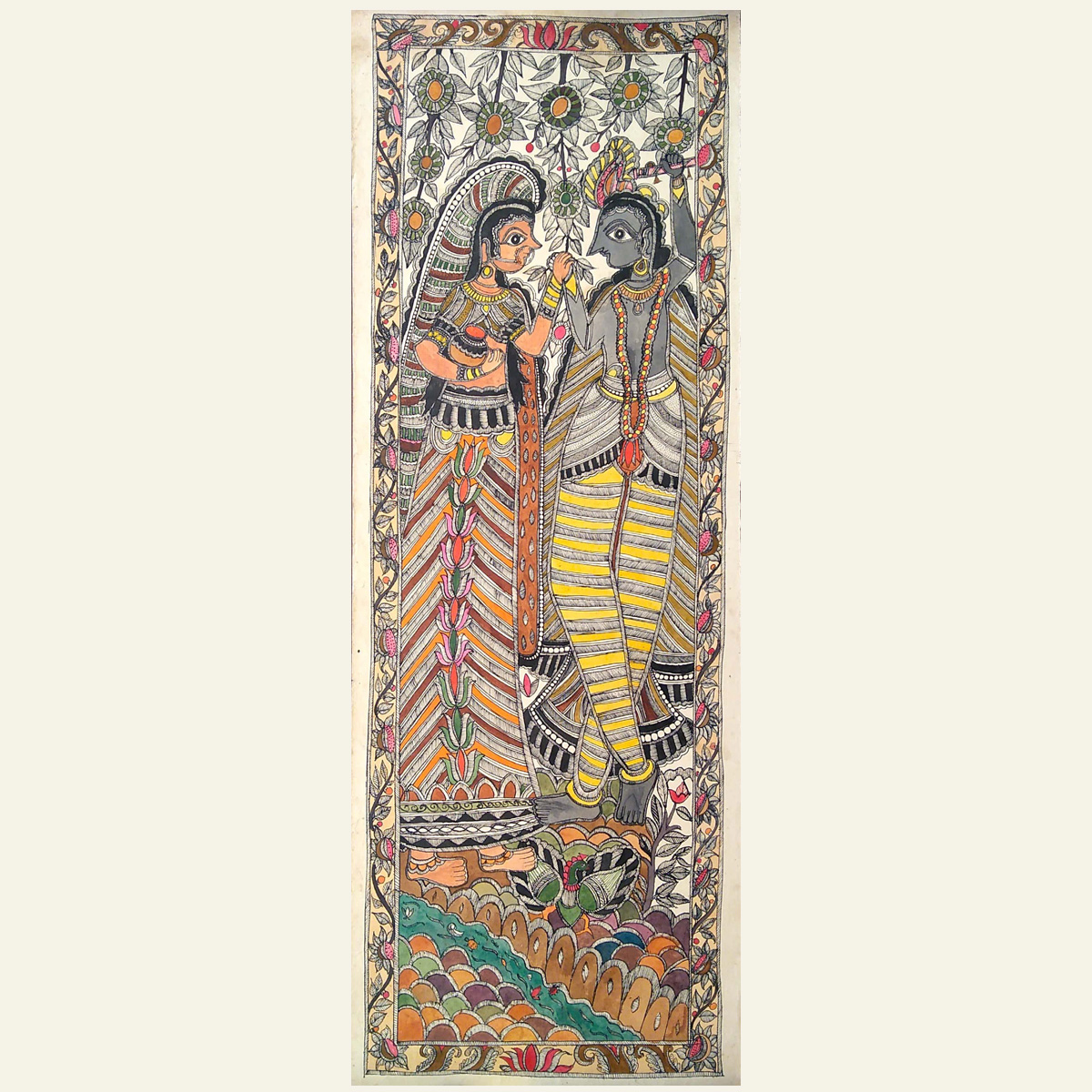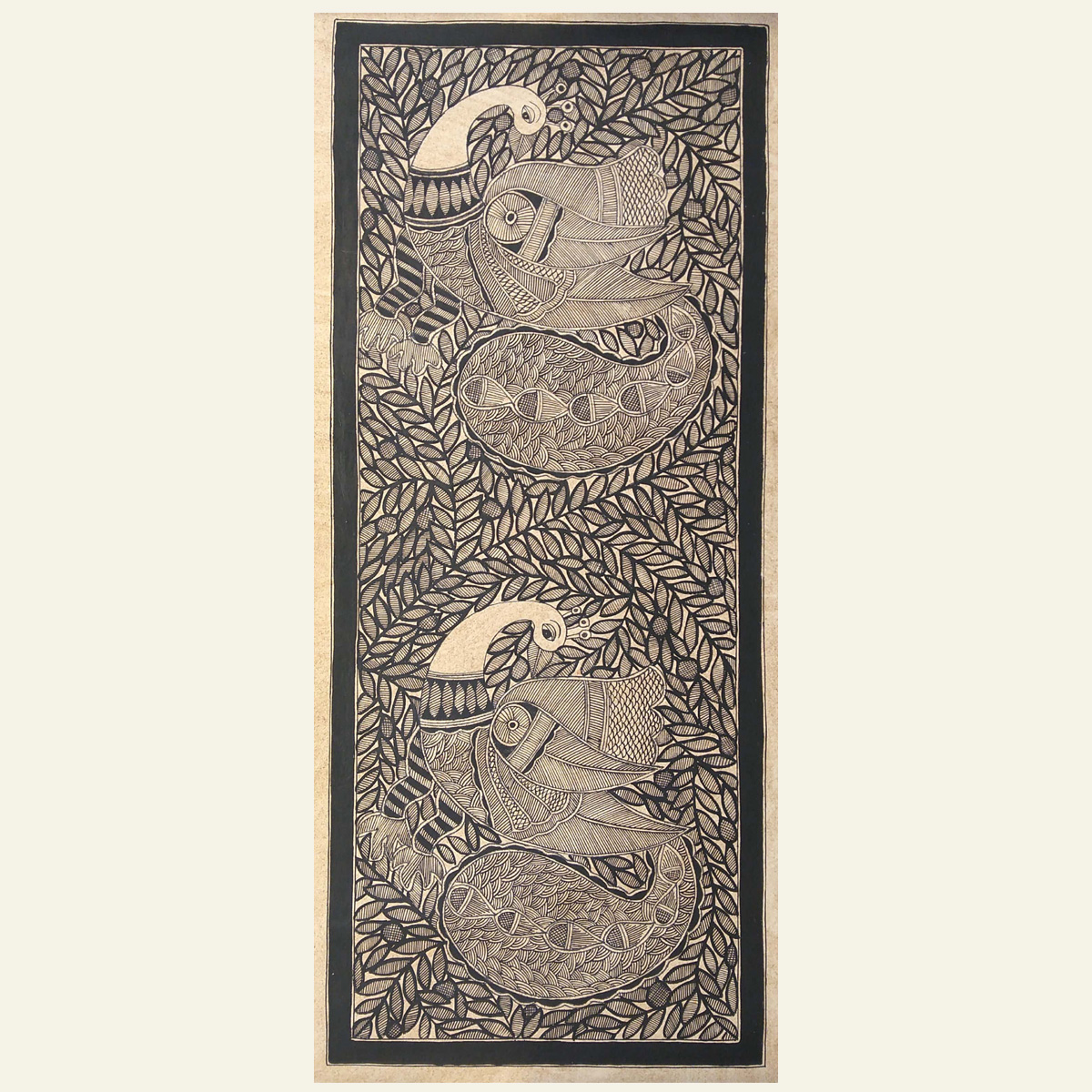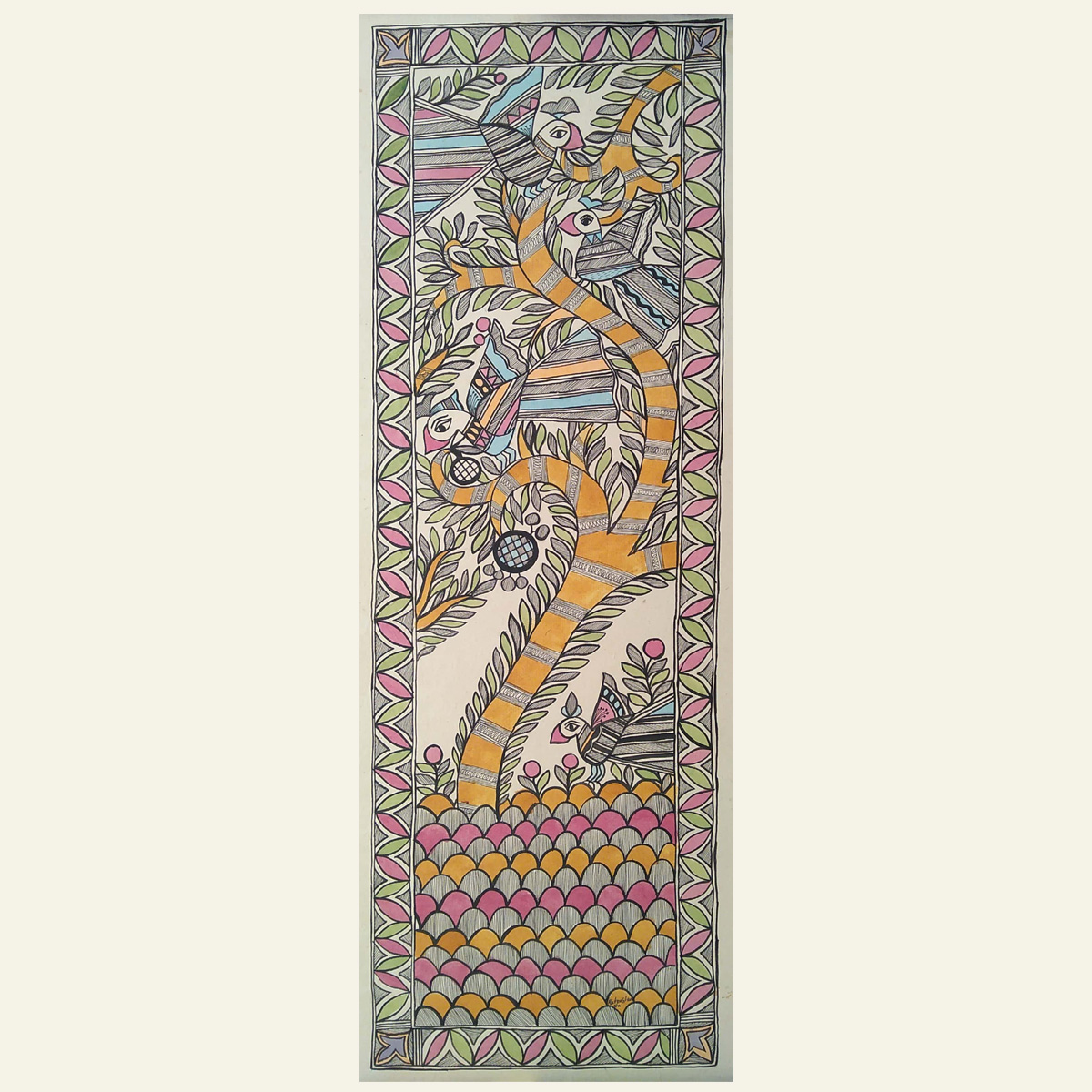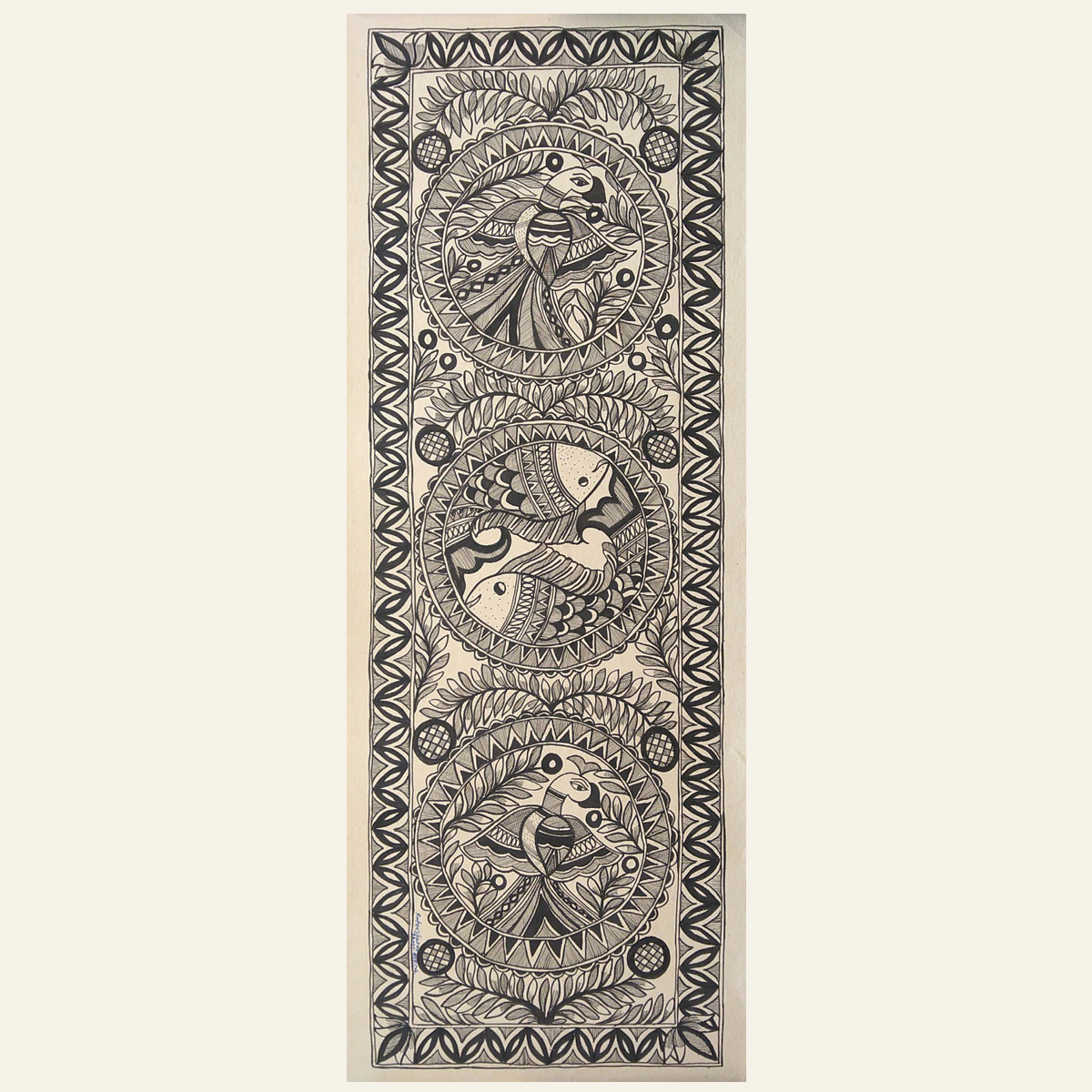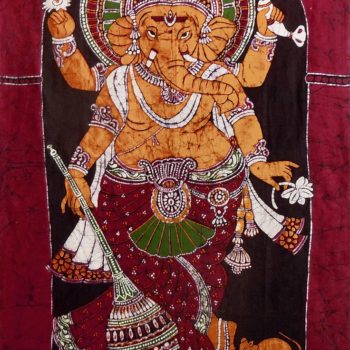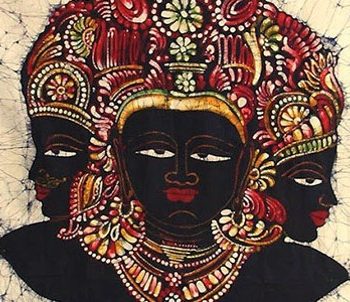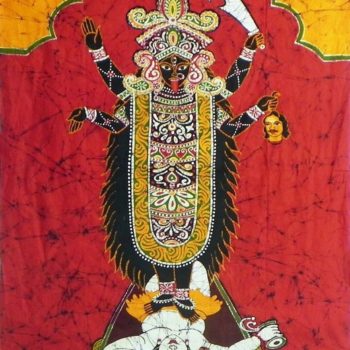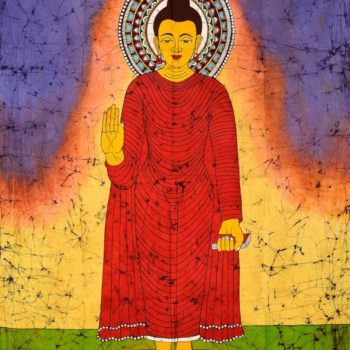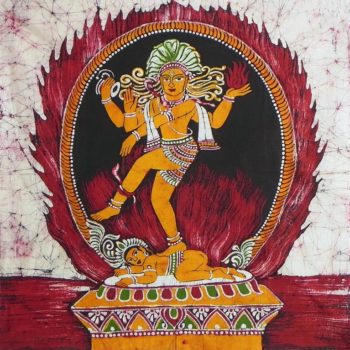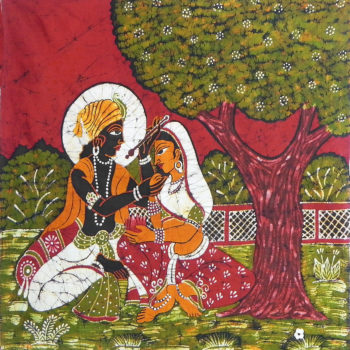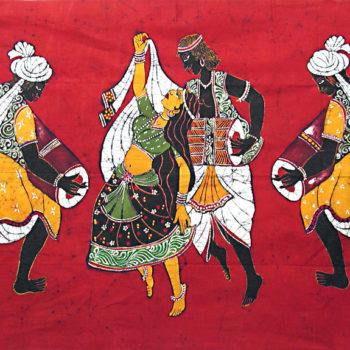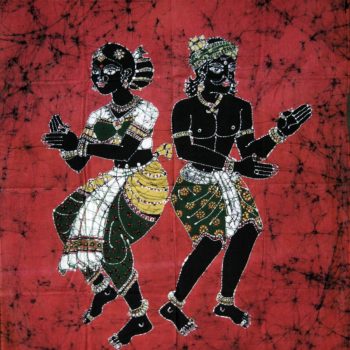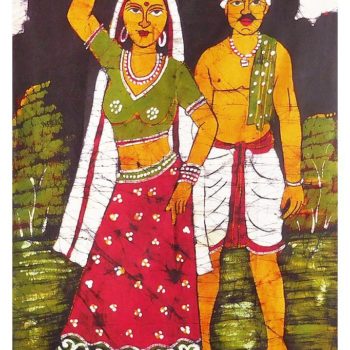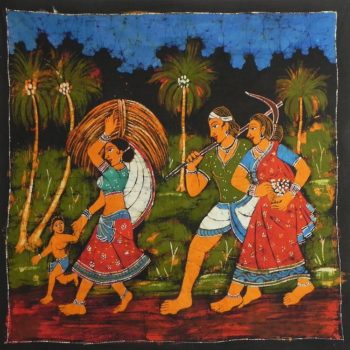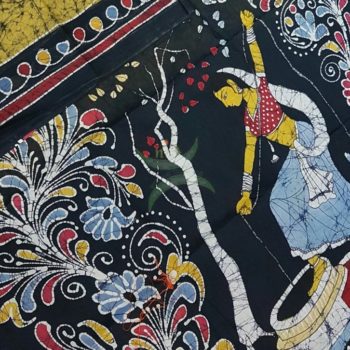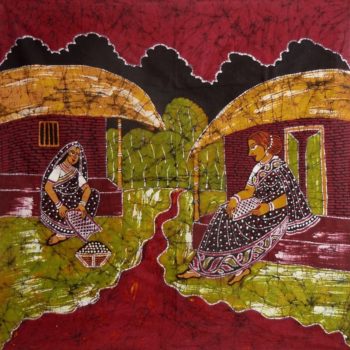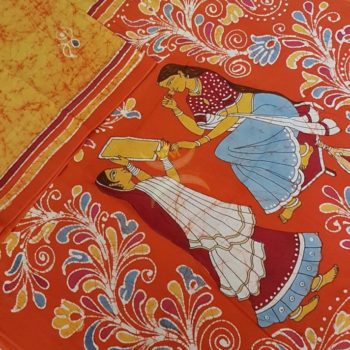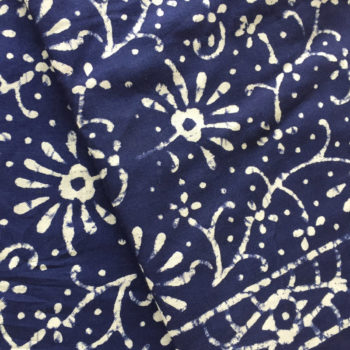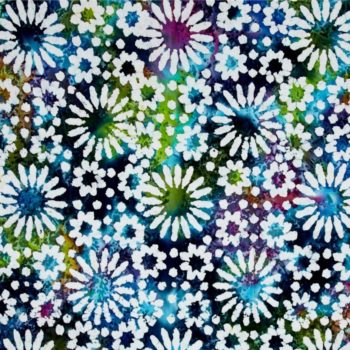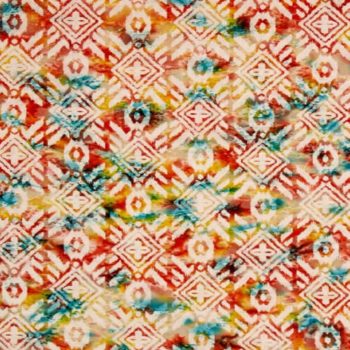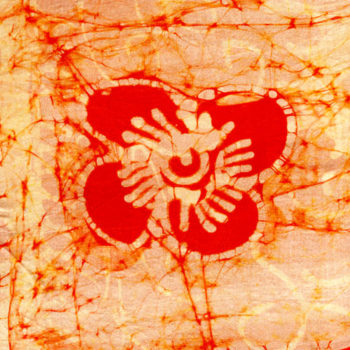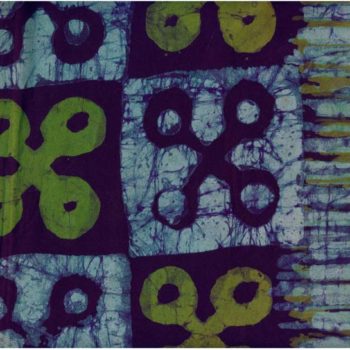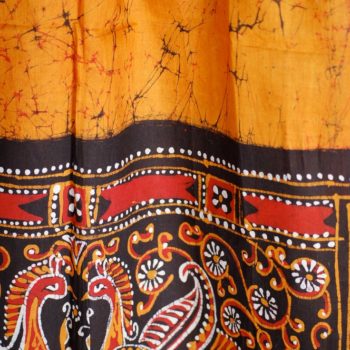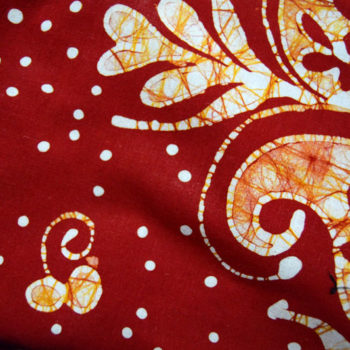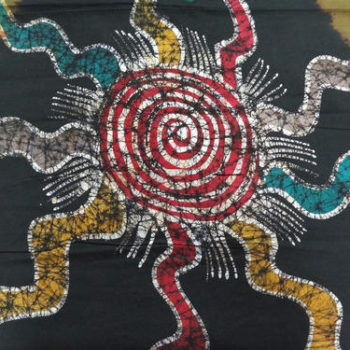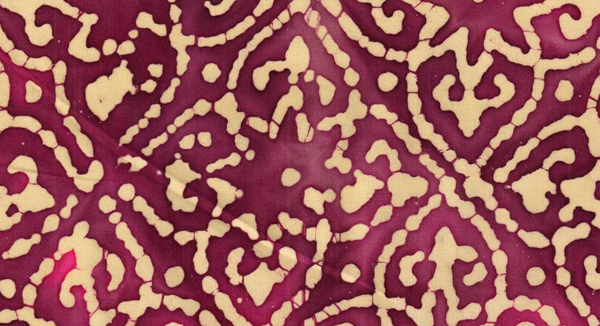
Look closely at this painting. It is not painted with a brush like other art forms. It is a made with a technique that involves waxing, dyeing, and scraping of the fabric known as Batik. This term is derived from the word Ambatik, which means wax writing.
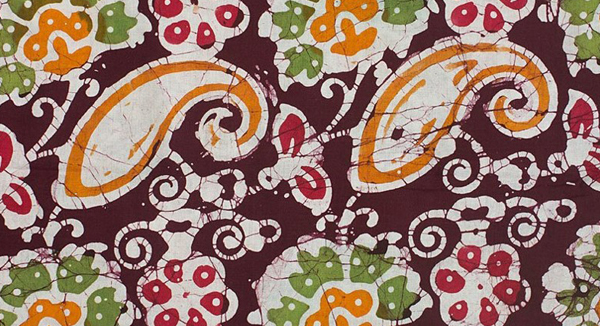
It is believed that the term is a derivation from the word `Ambatik’ which when translated literally stands for a piece of cloth with small dots or writing with wax or drawing in broken lines. Let us learn more about this art form from the story of Kanishka.
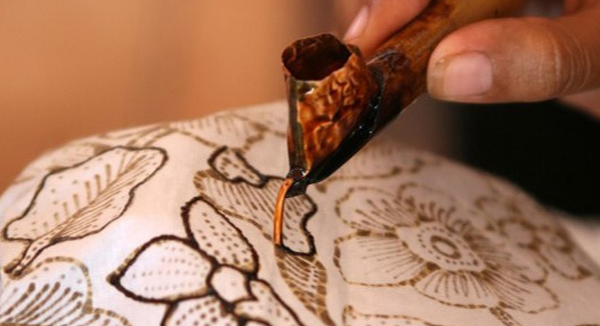
Kanishka is a 14 year old boy who belongs to the Khatri community that resides in Bhuj, Kutch district, Gujarat. People of his community are well known Batik artists in India. Throughout his childhood he has practiced it as a hobby with his friend and family, and he aspires to be a commercial Batik artist when he grows up.
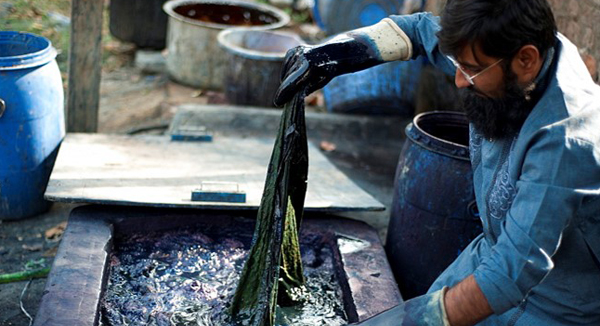
Every weekend or during school vacations, he and his friends, under the supervision of an adult, take several yards of cotton cloth and wash it to remove any impurities. Once it is dry, they pre-dye it in a base colour of their choice, following which they melt the wax. They use either paraffin wax or melted bees wax. Once the base colour dries, they fill melted wax in the pout of a Tjanting(a brass pen shaped is like a small cup with a single or double spout) and draw beautiful designs on the fabric.
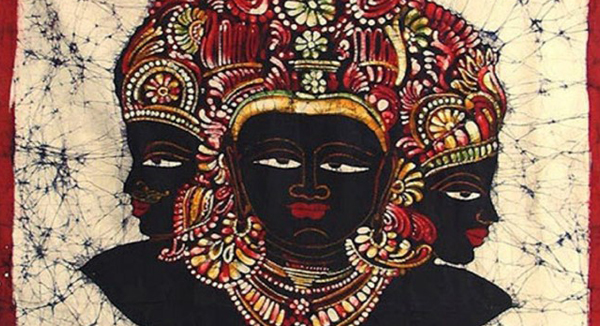
Some of his older friends who are well-versed in the art form paint Hindu Gods such as Bramha, Vishnu, and Mahesh, animals, flowers, leaves, or abstract intricate designs. The younger children enjoy dipping wooden blocks with patterns in melted wax and use them to create impressions on the fabric. The wax acts as a resist to block parts that are meant to retain the base colour.
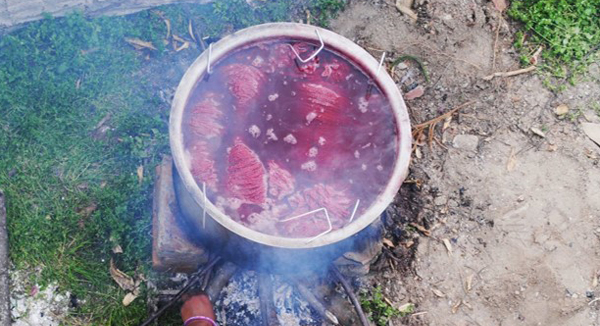
Once the wax dries, they dip the fabric in a dye of a different colour. Finally, they boil the fabric in soap and water to remove the wax. Once the wax is removed, the design below reveals the colour of the base fabric, whereas the rest of the fabric takes the colour of the second dye.
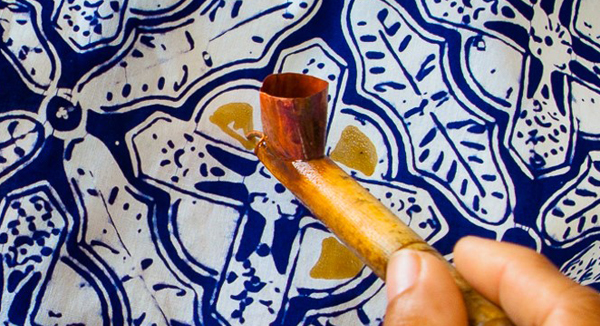
Years pass and Kanishka completes school. At the age of 21, he gets admitted into The Cholamandalam Artists Village, a self-supporting art village located 9km from Chennai, Tamil Nadu, which is the home of the finest contemporary artists in the country. There, he learns to practice Batik on other fabrics such as silk and georgette. He aspires to start his own institute to provide Batik training to needy women to help them start small-scale industries and become self-reliant.
Past Workshops
The Store

